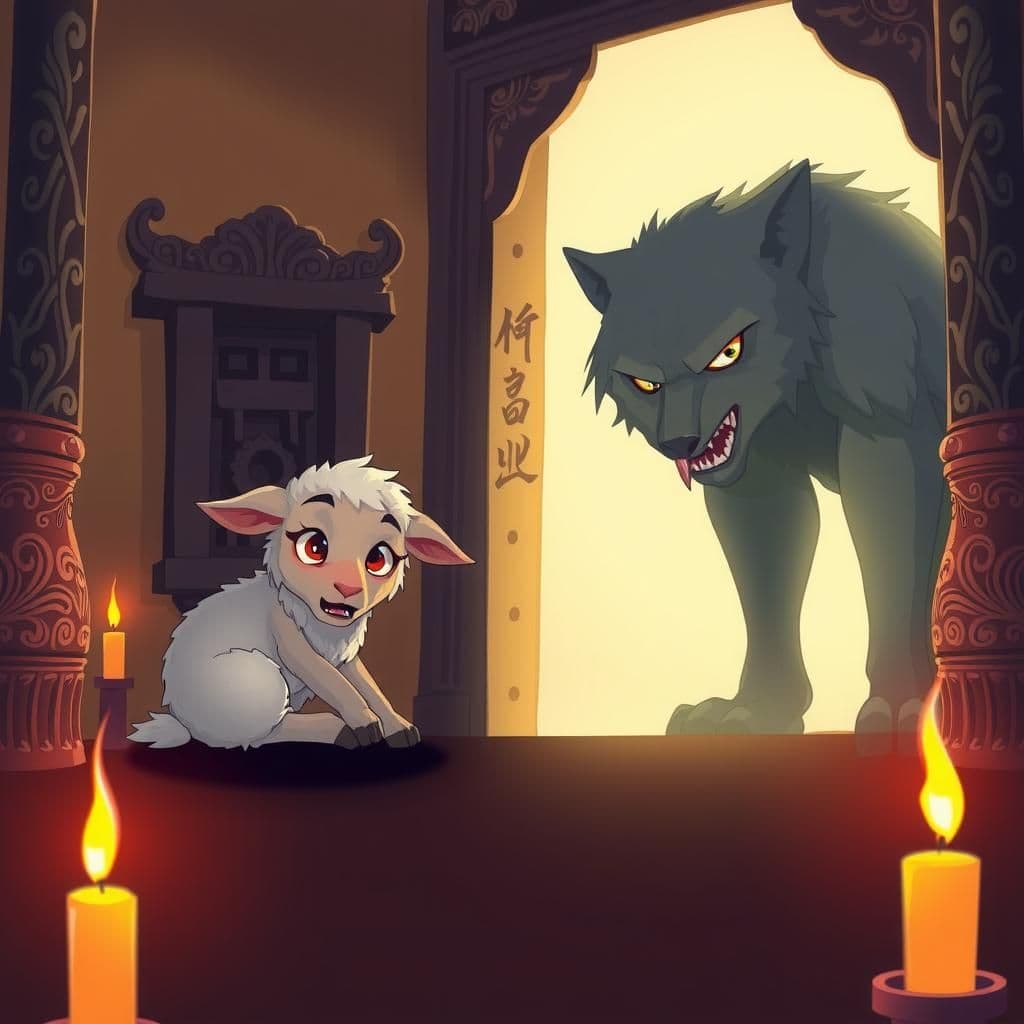The Lamb and the Wolf

Story Summary
In the simple short story "The Lamb and the Wolf," a Wolf chases a Lamb that finds refuge in a Temple. When the Wolf warns the Lamb that he would be sacrificed by the Priest, the Lamb wisely replies that being sacrificed is preferable to being eaten by the Wolf. This quick moral story highlights the theme of choosing a less harmful fate over a more dangerous one, making it a meaningful story with moral lessons suitable for class 7.
Click to reveal the moral of the story
It is better to face a certain danger with dignity than to succumb to a greater threat without hope.
Historical Context
This fable, attributed to Aesop, reflects themes of power dynamics and the moral choices faced by the weak in the face of predatory forces. Originating in ancient Greece, Aesop's Fables often highlight the cunning of animals to convey human virtues and vices. The story underscores the tension between safety and sacrifice, a common motif in various cultural retellings that explore the consequences of choice in the face of impending doom.
Our Editors Opinion
This fable highlights the importance of choosing a lesser evil over a greater one, a relevant lesson in modern life where individuals often face difficult choices between harmful options. For instance, a young professional might feel pressured to stay in a toxic work environment for job security (the Wolf) versus taking a risk to pursue a healthier career path that may involve initial instability (the Priest's sacrifice), ultimately recognizing that enduring temporary discomfort could lead to a more fulfilling future.
You May Also Like

The Statesman and the Horse
In "The Statesman and the Horse," a culturally significant moral story, a statesman who once saved his country encounters a racehorse rushing back to Washington, revealing that its master, another statesman, is hastily pursuing personal gain after a national crisis. This quick read story with moral highlights the contrast between the racehorse's loyalty and the statesman's disillusionment, ultimately exploring the moral complexities of ambition and leadership. Through entertaining storytelling with morals, the narrative encourages reflection on true motivations behind actions in positions of power.

The Lion the Fox and the Ass
In the short moral story "The Lion, the Fox and the Ass," three animals agree to share the spoils of a hunt. After the Ass is devoured by the Lion for dividing the loot equally, the Fox wisely learns from this misfortune and takes the largest portion for himself when asked to divide the spoils. This tale, part of folklore and moral stories, emphasizes the importance of learning from others' experiences, making it a fitting choice for bedtime moral stories.

The Master's Eye
In "The Master's Eye," a stag seeks refuge in an oxen stable, promising the oxen valuable information about pastures in exchange for their secrecy. Despite their initial support, the stag is ultimately discovered by the overseer, leading to his demise, which highlights the importance of vigilance and the consequences of misplaced trust. This impactful moral story serves as a cautionary tale, reminding readers of the timeless lessons found in the top 10 moral stories and short stories with moral for adults.
Other names for this story
"Temple of Sacrifice, Lamb's Dilemma, Wolf's Deceit, The Sacred Escape, Prey and Predator, Sanctuary Showdown, Divine Choice"
Did You Know?
This fable highlights the theme of choosing a lesser evil, illustrating how sometimes the options presented may force one to weigh immediate danger against a potentially more distant threat, ultimately reflecting on the nature of power and vulnerability in moral dilemmas.
Subscribe to Daily Stories
Get a new moral story in your inbox every day.